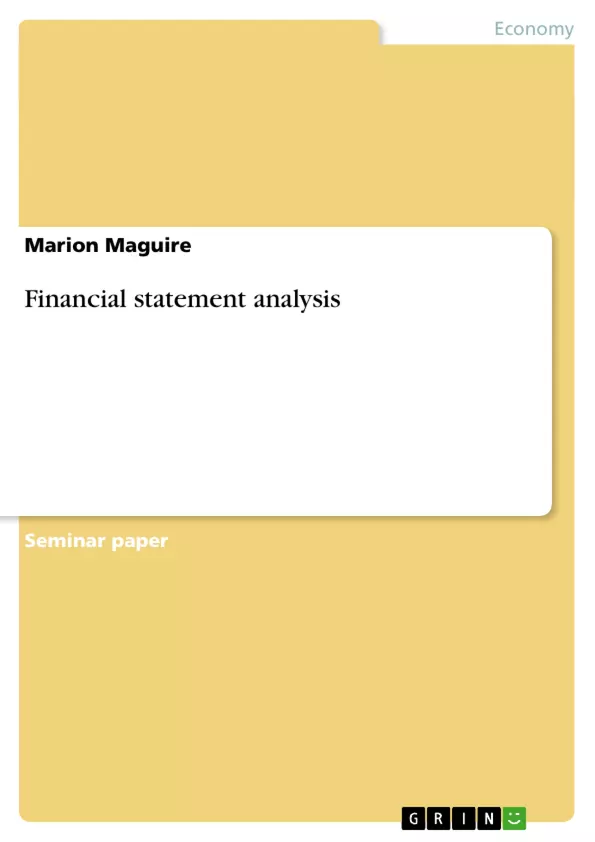The companies we selected are from the SEC Industry group 5651-Retail Clothing stores. This industry has a variety of stores ranging in age, distribution, and reputation. The companies we will financially analyze are Nordstrom, Gap Inc. and Abercrombie & Fitch. These three businesses represent the variety which the clothing industry contains. This report will consider and examine various financial aspects of our companies. By analyzing key figures from financial statements, we will be able to compare key issues between the companies. Such issues include liquidity, leverage, profitability, overall financial standing and accounting methods implemented. First we will begin with a brief description of each company.
Nordstrom was founded in 1901 by John W. Nordstrom. His philosophy was to offer customers the best possible service, selection, quality and value. The company is committed to the idea of which it began with, earning trust form customers one at a time. Nordstrom created its fashion departments to fit individual′s lifestyles. They currently have five channels of operation: full line stores, off/price stores, boutiques, catalog and the internet.
GAP was founded by Donald and Doris Fisher in 1969. Today it is one of the largest specialty retailers with three of the most recognized names: Gap, Banana Republic and Old Navy. The company employees over 165,000 people and has about 4,200 stores in the US, UK, Canada, France, Japan and Germany. The Gap is focusing on their international locations and continual expansion of company owned and operated stores. They are committed to monitor and improve the clothing production factories conditions overseas. The Gap continues to evolve and adopt good corporate governance revolving on conducting business in a responsible, honest and ethical matter (www.gap.com).
A & F was introduced in 1997 and spun off The Limited in 1998. It is a leading specialty retailer encompassing three concepts: Abercrombie & Fitch, Abercrombie and Hollister Co. The company focuses on high quality merchandise to compliment a casual American lifestyle, while targeting age′s 18-college. Abercrombie & Fitch claims their most important strategy: building their brands. Presently they are focusing on developing their women′s and girls departments. In 2002 they grew rapidly opening 112 new stores whereby at the end of the year the company had 597 locations nationwide (www.abercrombie.com).
Inhaltsverzeichnis (Table of Contents)
- INDUSTRY ANALYSIS
- COMPANY ANALYSIS
- Nordstrom
- The Gap Inc.
- Abercrombie & Fitch
- ACCOUNTING POLICIES
- Depreciation Method
- Inventory Method
- Allowances
- Tax Accounting
- Dividend policy
- Revenue Recognition
- Goodwill
- Long term investments
- Pensions
- QUALITATIVE EVALUATION
- Profitability
- Assets Utilization/ Liquidity
- Solvency
- LIMITATIONS
- RECOMMENDATIONS
Zielsetzung und Themenschwerpunkte (Objectives and Key Themes)
This report aims to analyze the financial performance of three major retail clothing companies: Nordstrom, Gap Inc., and Abercrombie & Fitch. By examining key financial ratios and accounting policies, the report seeks to compare the companies' liquidity, leverage, profitability, and overall financial standing. The report also explores the impact of different accounting methods on the companies' financial position.
- Financial Performance Analysis
- Comparative Analysis of Accounting Policies
- Impact of Different Accounting Methods
- Liquidity and Leverage
- Profitability and Financial Health
Zusammenfassung der Kapitel (Chapter Summaries)
The report begins with an overview of the retail clothing industry, highlighting its diversity and the key players. The company analysis section provides a brief history and description of Nordstrom, Gap Inc., and Abercrombie & Fitch, outlining their business models and strategic goals. The subsequent chapter focuses on accounting policies, examining key areas like depreciation, inventory methods, and allowances for doubtful accounts. The report then delves into the qualitative evaluation of the companies' financial performance, assessing their profitability, asset utilization, and solvency.
While the report outlines various aspects of financial analysis, it does not delve into specific recommendations or conclusions, leaving that for further exploration.
Schlüsselwörter (Keywords)
This report explores the financial statement analysis of retail clothing companies within the SEC Industry group 5651-Retail Clothing stores. Key themes and topics include financial performance, accounting policies, liquidity, leverage, profitability, asset utilization, and solvency. Specific areas of focus include depreciation methods, inventory methods, allowances for doubtful accounts, and the impact of different accounting practices on financial reporting.
- Citation du texte
- Marion Maguire (Auteur), 2003, Financial statement analysis, Munich, GRIN Verlag, https://www.grin.com/document/20217



